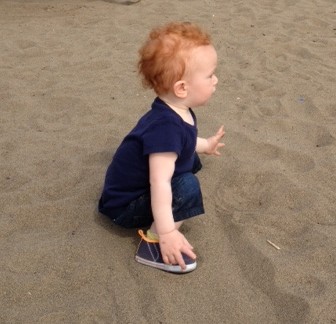- Home
- &
- Blog
- &
- Uncategorized
- &
- Foundational Movements: The Squat
Foundational Movements: The Squat
I am a big fan of squats. They are pretty comprehensives an exercise and as a screen for limitations in mobility, strength, or stability. Squats require proper movement and function of the spine, hips, knees and ankles. Throw in an overhead arm position and you have a pretty good screen for almost any joint in your body. The ability to get into and out of a good squat position using the proper joints to generate movement and power while protecting the joints that should be stable is a foundational functional movement that anyone should be able to do. It is also one of the more commonly limited or dysfunctional patterns we see.
This is an example of what we all should be able to do, and all could do at some point.

 In the picture at left, you can see the good upright posture, with his head balanced on top of his shoulders. This is an ideal standing position to balance loads on your joints and muscles.
In the picture at left, you can see the good upright posture, with his head balanced on top of his shoulders. This is an ideal standing position to balance loads on your joints and muscles.
In the squat position to the right you can see good flexibility in the ankles, knees and hips, and maintenance of the good upright posture. This is a basically a balanced resting position. Some rounding in the lower back is normal at this depth of squat and will not present a problem at body weight.
If this is something we can do shortly after starting to walk, why is it that so many of us can no longer get into this position? My opinion is that it is years of disuse, misuse or overuse that gradually erode our ability to function properly. There are some people who haven’t been in this position since they were toddlers. Combine this with decades of sitting at school and work, piling on repetitive stress and lack of movement, as well as injuries, and it is easy to see how such core movement can be lost.
Does this even matter?
If you can’t squat does that mean you will be in pain? Nope. Will it limit you day to day? Maybe not. Will you become injured? Possibly. Will you be at your best? Definitely not.
Even if a functional movement issue is not causing pain or symptoms and may not be limiting your daily life, it is still a dysfunction. It puts abnormal loads on joints, abnormal stress on muscles and ligaments and can limit the proper range of motion in multiple joints. All of these are unhealthy for the joints and their surrounding tissue. The information that these joints, muscles and ligaments send to your brain will also change. (For more on why this is important, see our post here.) This leads to compensatory movements, and in the long term is simply not as healthy as an ideal movement pattern.
If you want to be better than just not injured, if you want to move better, function better and perform better, this is a movement that you should work on.
Here is a good place to start:
Starting with a squat is not possible for everyone. Starting with the Hip Rocking, Clamshell, and Quadruped Exercises will be a gentle and easy way to ease into the movement pattern and muscle function of the squat. They are all available on our YouTube Channel
I also really like Ido Portal’s squat clinic routine: